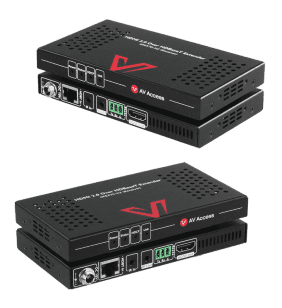Cat5e, Cat6, and Cat6a, Which Shall I Choose?
How to make a decision among Category 5e, 6, or 6a cables for wiring an Ethernet network? You may consider the cost, data transmission speed, and the supported connection distance. First, learn about what they are and the best choice would naturally come out.
Differences among Cat5e, Cat6 and Cat6a
Cat5e
A Cat5e (Category 5 enhanced) cable costs the least. However, it is also the slowest. It can transport data at speeds of up to one gigabit per second (Gbps) at 100 MHz up to 328 feet and there is less interference and a lower likelihood of transmission error.
While Cat 5e will provide enough performance for the majority of today’s applications, it also limits future upgrade options.
Cat6
Cat6 is a higher standard to transmit more gigabytes of data, but it is also more limited in terms of distance. Because of the enhanced insulation, Cat6 can sustain data transfer rates of up to 10 Gbps @250 MHz (about MHZ) with significantly less (or no) crosstalk interference. Cat6 cabling is better suited to the high-speed demands of Gigabit Ethernet networks.
Cat6a
Cat6a (Category 6 augmented) is the best solution for establishing a long-term effective Gigabit Ethernet network. Yes, it is more expensive than Cat 5e or Cat 6, but the gear you will be connecting to your network will only get more sophisticated as technology advances.
Cat6a supports a bandwidth of 10 Gbps as Cat6, but a greater distance and a higher frequency of 500 MHz. And, naturally, it’s better protected from interference.
What you shall consider?
Here are a few things you should take into consideration before making the decision — bandwidth, speed, transmission distance, and cost.
Firstly, as we have introduced above, Cat5e and Cat6 support different bandwidths of 1Gps and 10Gps. That’s quite different and you shall consider the volume of data you are going to carry with this Ethernet cable.
Secondly, speed. Are you using the Cat cables to hook up an ethernet switch? CAT6 cables can operate at rates of up to 250 MHz, which is more than double that of CAT5e’s 100 Mhz. They can handle up to 10 Gigabit Ethernet, but CAT5e cables can only support up to 1 Gigabit Ethernet.
Thirdly, the transmission distance.
Both CAT5e and CAT6 have transmission lengths of up to 100 m. Beyond this length, the maximum attainable speeds will never be met. As a result, the connection may be sluggish or fail, or there may be no connection at all. If the signal must travel more than 100 meters, it can be amplified using repeaters or you shall use fiber extenders or wireless extenders to transmit signals over a longer distance.
Due to the capacity difference, if you are using any ProAV products such as an HDMI extender or a KVM extender, which category of cable you choose may affect the maximum extension distance.
For example, you will find the different lengths this HDBaseT extender will extend with different Cat cables.

Main Features
- Supports HDMI 2.0 with 4K@60Hz 4:4:4 8bit and HDCP 2.2
- Supports HDR (High Dynamic Range) format
- Over a Cat 6a/7 cable, HDMI signal transport up to 230ft (70m) at 1080P and 131ft (40m) at 4K@60Hz (4:4:4)
- Over a Cat 5e/6 cable, HDMI signal transport up to 197ft (60m) at 1080P and 115ft (35m) at 4K@60Hz (4:4:4)
Lastly, Cat5e and Cat6 do price differently. However, if you are not buying a considerable quantity of it, the price difference is acceptable for most people.
Conclusions
You shall take into consideration the bandwidth, speed, transmission distance, and cost when you are choosing a Cat cable. Look at the whole picture of the AV setup you are dealing with. And about wiring, most buildings and houses have the wiring already installed in the first place. If you are considering a renovation, make sure the cable you select is compatible with your current (and maybe future) needs.
Original copy: https://www.avaccess.com/blogs/guides/cat5e-cat6-cat6a-difference/

